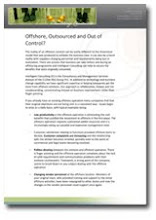Certified training has become extremely
popular within software development, as candidates are more willing
than ever to learn and expand their knowledge. In addition, as
technology evolves so quickly, training courses must adapt and evolve
to accommodate these changes.
Some
people feel that certified training is nothing more than a tick-box
exercise and only has limited value. Whilst I don’t agree, I do feel
that enrolling on a certified training course is not enough on its own
if you’re serious about becoming a respected Agile practitioner.
I
don’t want to devalue the importance of recognised and established
certification programmes. Having a globally recognised certificate is
important; it demonstrates not only your ability to learn, but your
desire to educate yourself at the very highest standard.
The
ideal scenario is to start with a brief Agile change plan, outlining
what your roadmap is. Become certified with a suitable and relevant
Agile training programme and then apply the knowledge you have learned
from the classroom to some real case studies through workshops and
activities.

Consistent Agile coaching is encouraged throughout
The
important element is having a coaching layer running throughout your
Agile journey. This adds much needed consistency, and having the
experience of a seasoned Agile veteran to help guide your transition can
become invaluable. Agile places value in people over process, after
all.
You’ll likely have a slightly
different change plan and roadmap, but if you take this proven approach
as a guide, you’ll have a much better chance of making your Agile
transition a successful one; not just for you, but for your team and
your organisation.
Certified Agile
training should be treated as your starting point – something to engage
your brain with the fundamentals, before utilising workshops and the
support of an Agile coach to apply your knowledge and add real value to
real projects.
The bottom line is
simple. Certified Agile training is an essential ingredient to your
professional development and Agile journey. But as with any great dish,
it’s only part of the recipe.
- James Harvey, Co-founder of Agile Snap
With a decade of Agile experience, James has at some point taken on every role within a Scrum team. Co-founder of Agile Snap,
James’ main focus is around coaching project teams in becoming
brilliant Scrum teams, along with providing formal, certified Agile
training to all levels of an organisation.









